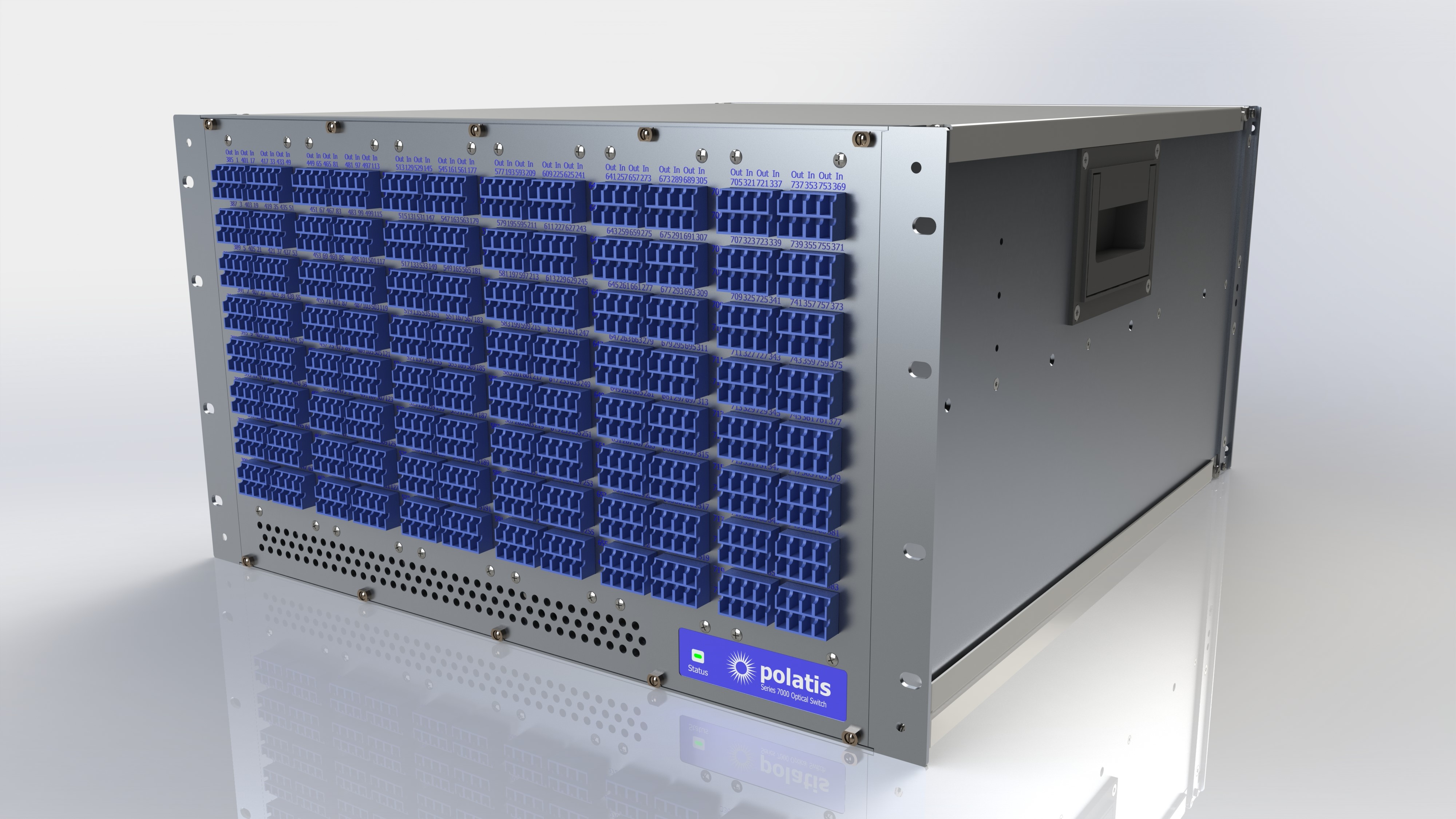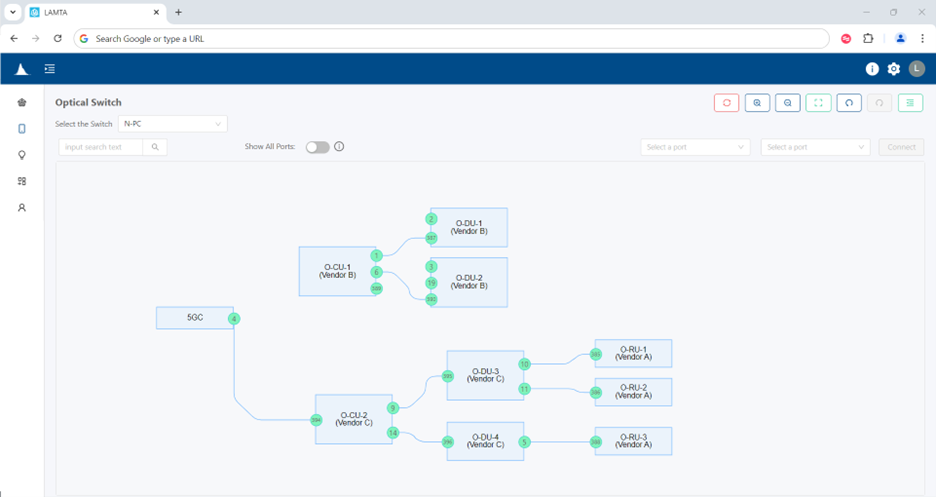Remotely Control Huber & Suhner Polatis Optical Switches and Routing Using LAMTA
To meet the growing demands for wireless network test automation to get to market faster, Acentury developed additional 3rd party integration into LAMTA’s hardware compatibility stack. LAMTA is an orchestration system for RF labs that automates test setup and teardown, optimizes lab resource management, and scales from a single test bench to multi-site, multi-city labs.
Introducing new features in LAMTA enable testers and users to remotely manage the teardown and setup of testbeds in an End-to-End manner. In the latest version, LAMTA 24.2 introduces remote control capabilities for managing optical switches.
Optical Switches

Optical Switches enable the control and management of fiber connectivity by routing transmissions from one point to another without any physical alterations. Optical switches support different signal processing and switching methods, including OOO (Optical-Optical-Optical) and OEO (Optical-Electrical-Optical).
OOO Switches
An OOO switch maintains the signal in its optical format throughout the routing process. This approach offers several advantages, including:
• High Bandwidth: The signal remains in the optical domain, eliminating bandwidth limitations during switching.
• Low Latency: By avoiding the conversion of optical signals to electrical, OOO switches reduce delays associated with signal processing.
OEO Switches
On the other hand, an OEO switch converts the optical signal to electrical form, processes or switches it in the electrical domain, and then converts it back to an optical signal. OEO switches offer the following benefits:
• Signal Amplification: They can amplify the signal, ensuring it remains strong throughout transmission.
• Versatility: OEO switches can manage and handle various signal types and formats by converting signals to a standard electrical format.
In LAMTA’s latest 24.2 release, Acentury integrated Huber & Suhner Polatis optical switches and introduced a new control feature. LAMTA users will now be able to control the optical switch using a graphical interface to edit and configure the switch connections ,allowing for quick modification of routes and facilitating rapid changes to the topology of the System-Under-Test (SUT).

Imagine a test underway in the RF lab where you need to test a specific O-RU from vendor A with O-CU/O-DUs provided by vendors B and C. Instead of physically connecting and disconnecting all components, users can connect them to a central Optical Switch. This switch allows users to change the routes internally using the provided connection map or table feature in LAMTA software.
System Under Test – Scenario 1 using [Vendor B] O-CU/O-DU

Simply drag and drop the connections in the GUI to reconfigure the topology for SUT Scenario 2. No physical changes are required.
System Under Test (SUT) – Scenario 2 using [Vendor C] O-CU/O-DU

With the latest LAMTA release, users will be able to manage end-to-end (E2E) connectivity from the core to the radio units through optical and RF switches.
To learn more about our LAMTA product, click here.
Related Articles
Introducing the LAMTA RF Test Position
Sharing RF Lab resources with Multiple Testers to Improve ROI
Have a question or comment?
We'd love to hear it. Fill out our General Inquiry Form or reach us directly at: info@acentury.co
CONTACT US